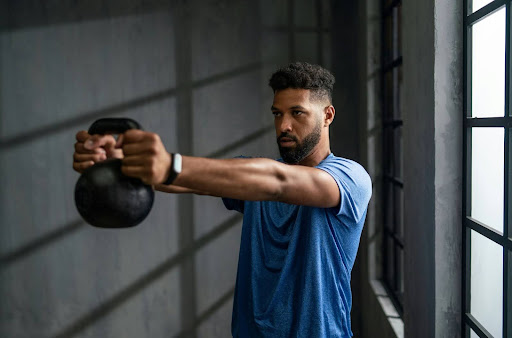
Normally boxing is associated with being a violent or bloody sport, where one assumes that limited skills are okay to excel here. But we know boxing is a sport which doesn’t just work on physical prowess but also needs mental strength, skills and strategy. Strength and conditioning are crucial for a boxer as they contribute to their performance. These elements provide power, speed, endurance and injury prevention to a practitioner. A well-structured strength and conditioning program is essential for boxers to enhance their abilities and excel in the ring and make use of their boxing accessories in a much better way.
Understanding Strength and Conditioning
Strength and conditioning is a training program that aims at improving physical performance. It is a combination of strength training, cardiovascular conditioning and flexibility exercises. Here the focus is on overall health and wellness, and strength and conditioning for boxing and is tailored to meet the specific demands of the sport. This will include exercises for building muscle strength, enhancing cardiovascular endurance, developing explosive power, and ensuring proper flexibility and mobility.
Key Components of Strength and Conditioning for Boxing
Strength Training

Building muscle strength is essential for all boxers. To pack a powerful punch, you need a solid foundation of strength. Squats are crucial for lower body power and stability, while deadlifts boost overall strength and core engagement. Kettlebells can add a dynamic twist to deadlifts. For upper body strength, incorporate bench presses to develop the power needed for explosive punches.
Conditioning
Cardiovascular and respiratory endurance are vital for maintaining high energy levels throughout a match or practice. The same effective conditioning exercises include:
- Running: Enhances aerobic capacity and endurance.
- Cycling: Low-impact cardio to build stamina.
- Jump Rope: Improves coordination, agility, and cardiovascular fitness.
- High-Intensity Interval Training (HIIT): Boosts cardiovascular endurance and mimics the intensity of a boxing match.
Plyometrics
Plyometric exercises better known as jump training or plyo are exercises done with jump boxes, in which muscles exert maximum force in short intervals of time, intending to increase power (speed-strength). They are crucial for developing explosive power and agility, essential for quick, powerful movements in the ring. Key exercises include:
- Box Jumps: Enhance lower body explosive power.
- Plyometric Push-Ups: Improve upper body explosiveness.
- Medicine Ball Throws: Develop rotational power and core strength.
Core Stability
A strong core provides the foundation for explosive power, balance, and agility. Without a stable base, delivering a knockout punch is nearly impossible. It is also important for maintaining balance in the ring. The constant movement, feinting, and dodging require a solid center. A well-developed core helps boxers absorb punches, reducing injury risk and allowing quicker recovery between rounds.
To build a strong core, exercises like planks, Russian twists, and hanging leg raises are invaluable. These exercises target different core muscles, ensuring comprehensive strength development.
Flexibility and Mobility

Flexibility and mobility are equally important for preventing injuries and enhancing movement and stamina.They are the foundation for smooth, efficient movements in the ring, allowing boxers to react swiftly and maintain their form throughout a match.
Dodging punches quickly or landing powerful blows from unexpected angles requires flexibility. Essential components of training include dynamic stretches, yoga, and foam rolling for recovery.
Designing a Boxing-Specific Strength and Conditioning Program
Assessment
Getting your current fitness levels evaluated for anyone is crucial for a beginner or any boxing enthusiast. This will help to identify strengths and areas that need improvement.
Goal Setting
A realistic and measurable goal set by you will help you create a successful training program. This goal will align with your specific objective of boxing, like if you wanna be more agile, improve your punch power, improve your stamina or more.
Well-thought Program
The next step is to design a well-rounded program that balances strength, conditioning, and skill training. The workout program should be planned in terms of frequency, intensity, and duration so one must also be careful to avoid overtraining and ensure steady progress.
Progression
It is always advisable to gradually increase the intensity and complexity of workouts as this will lead to continuous improvement. Also, make sure you monitor progress and make necessary adjustments to help in achieving the desired outcomes.
Sample Workouts and Drills
Example Strength Training Routine for Boxers
- Squats: 3 sets of 8-10 reps
- Deadlifts: 3 sets of 6-8 reps
- Bench Press: 3 sets of 8-10 reps
- Pull-Ups: 3 sets of max reps
- Medicine Ball Slams: 3 sets of 10 reps
Example Conditioning Drills and HIIT Routines

- Jump Rope: 3 rounds of 3 minutes
- Sprint Intervals: 10 sprints of 30 seconds with 1-minute rest
- Shadow Boxing with Burpees: 3 rounds of 3 minutes
Example Plyometric Exercises and Core Workouts
- Box Jumps: 3 sets of 10 reps
- Plyometric Push-Ups: 3 sets of 10 reps
- Russian Twists: 3 sets of 20 reps
- Planks: 3 sets of 1 minute
Tips for Incorporating Flexibility and Mobility Exercises
- Dynamic Stretching: 10-15 minutes before workouts
- Yoga Session: Once a week
- Foam Rolling: Post-workout for 10-15 minutes
Nutrition and Recovery
Proper nutrition and recovery are essential to support rigorous training and optimise performance. Key nutrients for boxers include:
- Proteins: Crucial for muscle repair and growth.
- Carbohydrates: Provide energy for intense workouts.
- Fats: Essential for overall health and sustained energy.
- Vitamins and Minerals: Support various bodily functions and aid recovery.
Hydration Strategies
One factor many enthusiasts skip is not hydrating themselves. Since we know Staying well-hydrated is vital for performance and recovery. Boxers need to drink plenty of water while training and during the day, add electrolyte supplements too during intense training sessions.
Recovery Techniques
- Rest and Sleep: Ensure adequate rest and aim for 7-9 hours of sleep per night.
- Active Recovery: Include low-intensity activities like walking or light swimming.
- Sports Massage: Helps in muscle relaxation and reduces soreness.
Common Mistakes to Avoid
Overtraining and Its Effects
Often overtraining is something that many of us indulge in, thinking that it will speed up the process. It can lead to fatigue, injuries, and decreased performance. It is crucial to balance training intensity and ensure proper rest.
Neglecting Recovery and Flexibility
Not concentrating on recovery and flexibility exercises can lead to the risk of injuries and limit performance improvements. Hence, it is crucial to follow the schedule created for rest days or exercise days for flexibility.
Focusing Too Much on One Aspect
A well-rounded program should balance strength, conditioning, and skill training. Overemphasising one area while neglecting others can hinder overall progress.

Strength and conditioning are foundational to boxing success.
By cultivating muscle strength, cardiovascular endurance, explosive power, flexibility, and mobility, boxers can dramatically elevate their in-ring performance. Achieving optimal results demands dedication, consistency, and a personalised training approach. With the right program, boxers can not only reach new career heights but also reap the extensive benefits of peak physical condition.
To kickstart your journey, consider incorporating equipment like medicine balls, jump ropes, and resistance bands from Lee Warehouse. These tools can be invaluable in building a comprehensive training regimen.



